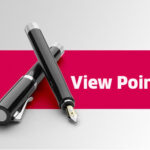Western Disturbances (WDs) are extratropical storms originating from the Mediterranean region that travel eastward, bringing sudden weather changes to North India, particularly in the Himalayas. For Jammu and Kashmir (J&K), these systems play a crucial role in determining the region’s weather patterns, agriculture, tourism, and overall ecology. While WDs are a vital lifeline in terms of snowfall and water resources, their increasing unpredictability—exacerbated by climate change—makes effective preparedness a pressing concern.
What are western disturbances?
Western Disturbances are low-pressure systems embedded in the subtropical westerly jet stream. They enter the Indian subcontinent through Iran, Afghanistan, and Pakistan, eventually reaching the western Himalayas. Typically more active during winter, WDs bring cloud cover, precipitation in the form of rain and snow, and considerable temperature fluctuations. These weather systems play a dual role—while they bring much-needed precipitation, they also pose risks such as avalanches, landslides, and transportation disruptions.
Impact in Jammu & Kashmir:
Winter Snowfall and Water Resources
WDs are the principal source of winter snowfall in J&K, particularly affecting the Kashmir Valley and Ladakh region. This snowfall replenishes glaciers and acts as a natural reservoir that releases water gradually into rivers like the Jhelum, Chenab, and Indus during summer.
The snowmelt is vital for:
- Sustaining agriculture through irrigation.
- Maintaining ecological balance in wetlands.
- Generating hydropower, which is a significant energy source for the region.
Agriculture
Rabi crops such as wheat, barley, and mustard rely heavily on timely and sufficient precipitation provided by WDs. A weak or erratic WD season can severely impact crop yield, potentially leading to food shortages and financial stress for farmers.
On the flip side, intense and untimely WDs can cause:
- Crop lodging due to heavy snow or hail.
- Waterlogging in agricultural fields.
- Delay in sowing or harvesting cycles.
Tourism
Winter tourism is significantly driven by WDs, especially in destinations like Gulmarg, Pahalgam, and Sonamarg. Snowfall brought by these systems attracts tourists for skiing, snowboarding, and sightseeing.
However, intense WDs can lead to:
- Disruption in air and road connectivity.
- Increased risk of avalanches in tourist zones.
- Tour cancellations and revenue losses.
Avalanches and Landslides
High-altitude regions like Kupwara, Kulgam, Gurez, and parts of Ladakh become prone to avalanches following heavy snow accumulation from WDs.
Simultaneously, rainfall in lower areas triggers:
- Landslides that block essential highways.
- Soil erosion and habitat degradation.
Transportation and Connectivity
WDs often result in the closure of critical roads and highways including:
- Jammu-Srinagar National Highway.
- Mughal Road.
- Zojila Pass and Sinthan Top.
Such closures affect:
- Trade and supply chains.
- Patient mobility during medical emergencies.
- School and workplace attendance.
Disaster Management Challenges
Sudden, intense WDs stretch the region’s disaster management capabilities. Common challenges include:
- Flash floods due to rapid snowmelt.
- Power outages and communication breakdowns.
- Shortage of essential supplies in cut-off areas.
Climate Change Concerns
Climate change is amplifying the erratic nature of WDs. Some years witness excessive disturbances, while others see prolonged dry spells. This unpredictability results in:
- Unseasonal rains damaging crops.
- Delayed or deficient snowfall affecting water availability.
- Increased vulnerability to weather-related disasters.
Lack of Effective Real-Time Command System
One of the glaring weaknesses in J&K’s administrative framework is the absence of a centralized real-time command and control system.
Impacts include:
- Poor coordination between departments like meteorology, traffic police, health, and local administration.
- Delayed evacuations and emergency responses.
- Inefficient resource deployment and damage control.
Despite the Smart City Mission and other development schemes, the integration of emergency response mechanisms remains inadequate.
Necessary steps for preparedness: Role of government and public
To effectively mitigate the impact of Western Disturbances, both government institutions and the general public have a role to play:
Government Measures:
- Real-Time Emergency Coordination: Establish a centralized emergency operations center to ensure seamless communication across departments.
- Infrastructure Upgradation: Reinforce vulnerable infrastructure such as roads, bridges, and power lines to withstand adverse weather.
- Accurate Forecasting & Early Warning: Invest in satellite-based monitoring and disseminate alerts via multiple communication channels.
- Environmental Sustainability: Mandate EIAs for new projects and enforce regulations to protect forest cover and wetlands.
- Training & Capacity Building: Equip administrative and disaster response teams with training, equipment, and clear protocols.
Public Responsibility:
- Stay Updated: Follow official channels for weather and traffic updates.
- Emergency Preparedness: Keep emergency kits, power backups, and medicines ready during winter months.
- Responsible Tourism: Avoid traveling to vulnerable areas during peak WD events and adhere to safety advisories.
- Ecological Awareness: Participate in afforestation drives, avoid construction on unstable slopes, and reduce waste.
- Community Support: Help neighbors and vulnerable groups during emergencies, especially in remote or rural areas.
Conclusion
Western Disturbances are both a blessing and a challenge for Jammu & Kashmir. While they provide critical water resources and sustain agricultural and tourism economies, their erratic and sometimes extreme nature poses substantial risks to life and infrastructure. With the added uncertainty brought by climate change, it is imperative to adopt a multi-pronged approach involving technological upgrades, inter-departmental coordination, and grassroots participation.
A centralized, real-time command system combined with an informed and responsible citizenry can significantly mitigate the negative impact of WDs. Moving forward; the region must strike a balance between development and ecological preservation to build long-term climate resilience.
(The author is a Freelancer and National TV debater. He can be reached at [email protected])








